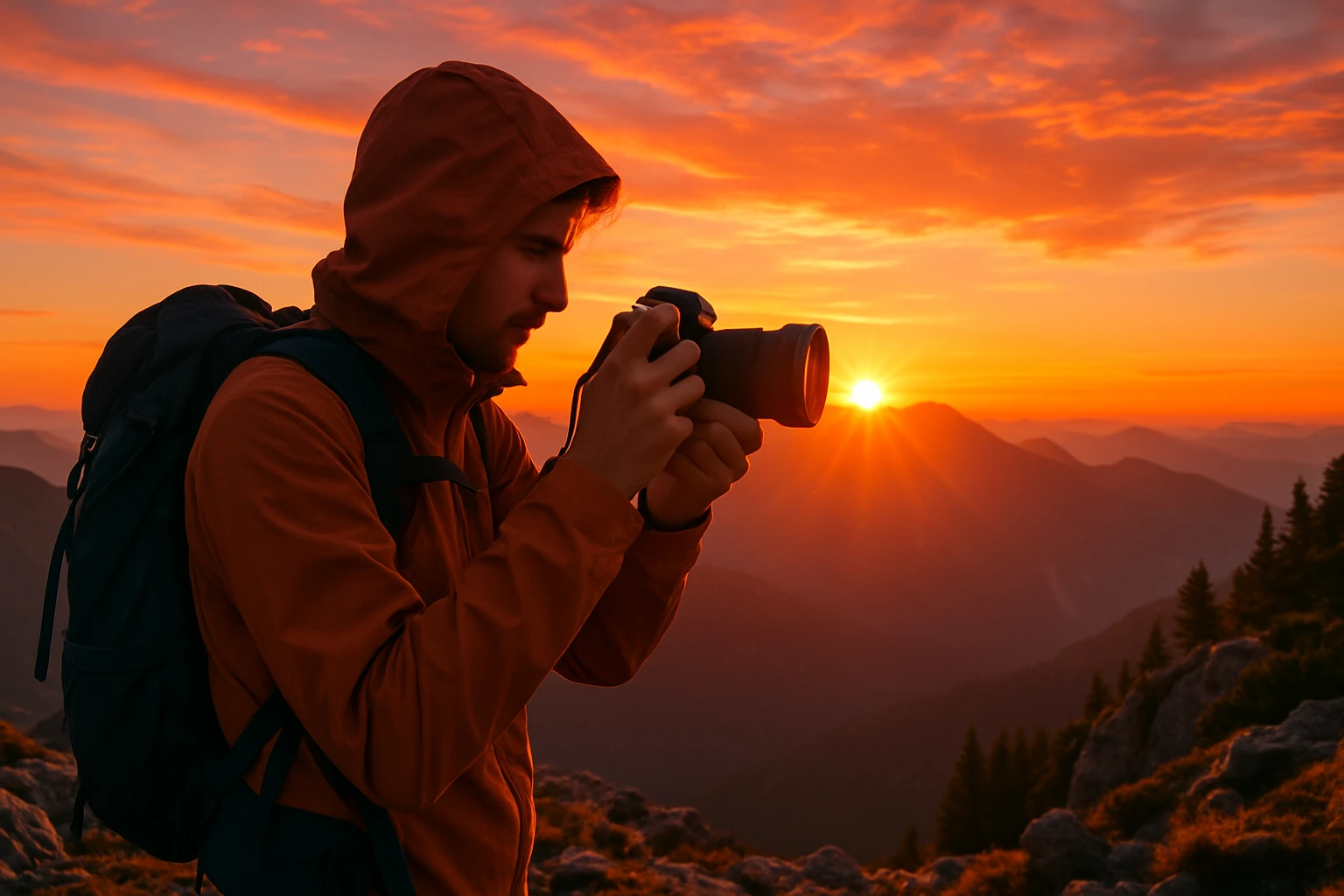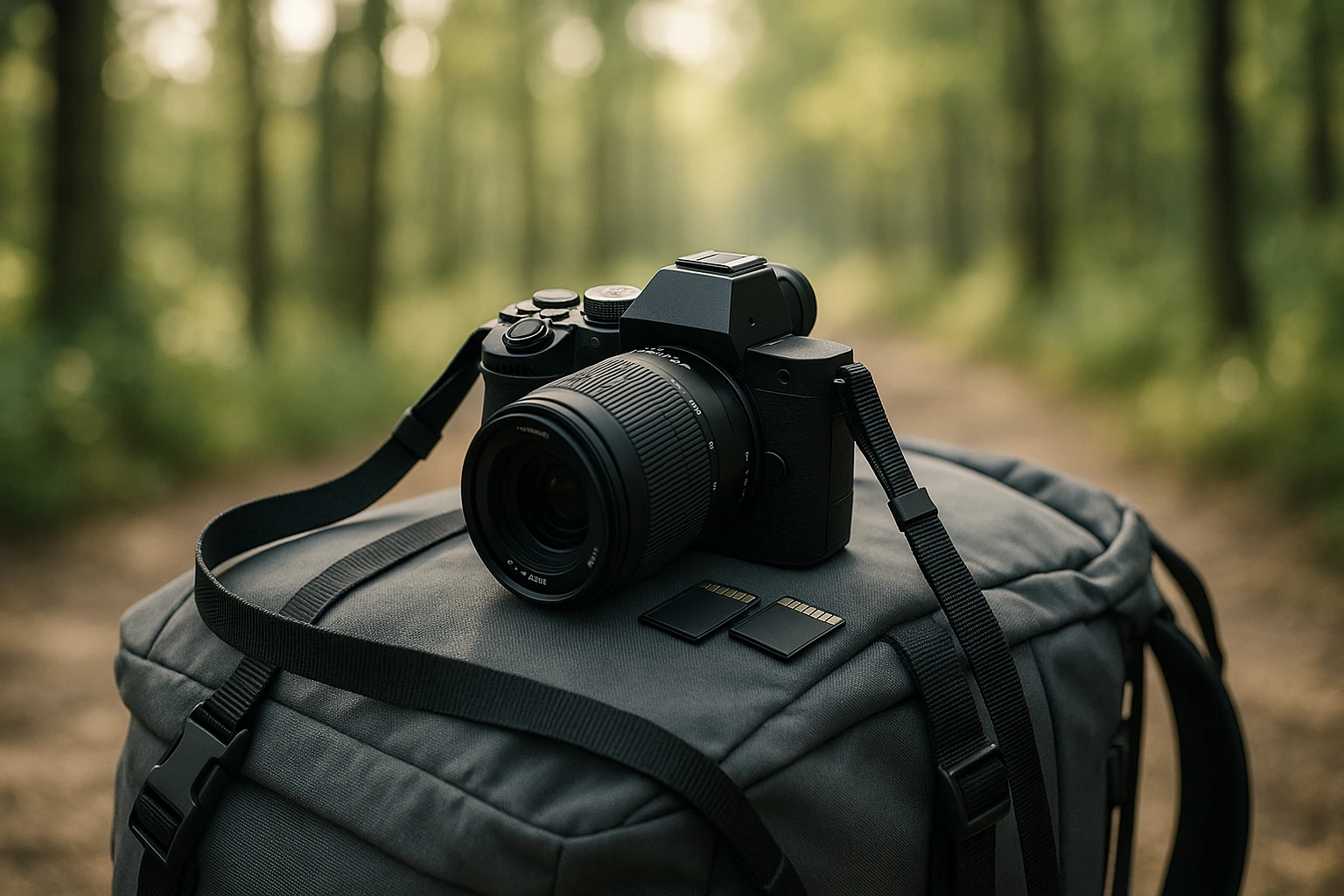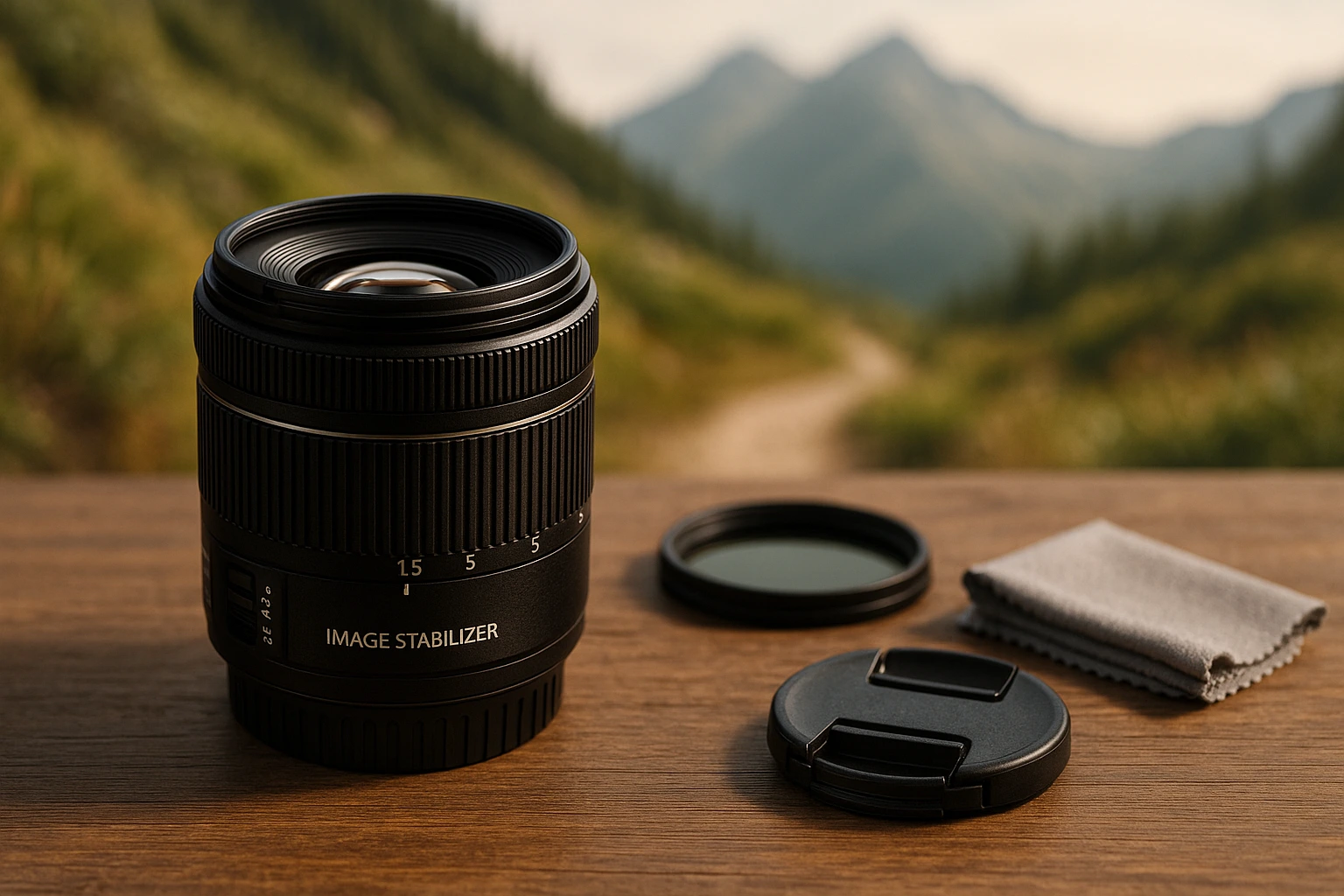
You’re hiking before sunrise and the view is perfect, only your pack feels like a brick. For backpackers who love to shoot, the right lightweight adventure photography gear for backpackers keeps you mobile and creative. This guide highlights the cameras, lenses, and simple techniques that cut weight without cutting quality.
Table of Contents
- Why Lightweight Photography Gear Matters
- Choosing a Trail-Friendly Camera Setup
- Selecting Compact Adventure Photography Equipment
- Accessories for Lightweight Photography Gear for Travel
- Protecting Backpacking Camera Gear
- Mastering Adventure Photography Techniques
- Capturing Breathtaking Landscapes
- Wildlife Photography with a Lightweight Kit
- Post-Processing for Adventure Photos
- Interactive Gear Check for Backpackers
- Frequently Asked Questions
- Conclusion
Why Lightweight Photography Gear Matters for Adventure 📸
Carrying heavy gear on a backpacking trip can sap your energy, make you ache, and even lead to a twisted ankle on a rocky path. Lightweight tools help you move easier, save energy when the light is perfect, and stay balanced on rough terrain so you can enjoy the hike more.
“The best camera is the one you’re happy to carry. Lightweight gear means you’re always ready to snap that perfect moment!”

For a bigger-picture mindset, see Traveling with Purpose: Lessons from the Road.
Choosing a Trail-Friendly Camera Setup 📷
If you’re shopping for lightweight adventure photography gear for backpackers, here’s the simple way to choose: start with a body that feels good in hand and won’t weigh you down, then add one or two lenses that actually match how you shoot.
Mirrorless: Best Balance of Weight + Quality
Mirrorless cameras are my go-to for serious backpacking trips. They’re compact yet pack a punch with pro-level performance. Models like the Sony a6600, Fujifilm X-T5, or Canon EOS R50 deliver jaw-dropping images and slip easily into your pack.
- Pros: Lightweight (300–600g), stellar image quality, swappable lenses, tons of features.
- Cons: More expensive than point-and-shoots, battery life can be a bit short.
Advanced Point-and-Shoot Cameras for Backpacking
If you’re a casual shooter, advanced point-and-shoots like the Sony RX100 VII or Canon PowerShot G7 X Mark III are perfect. They’re tiny, easy to use, and their wide-aperture lenses shine in dim light.
- Pros: Super compact (200–400g), solid image quality, user-friendly, budget-friendly.
- Cons: Limited zoom, smaller sensors, fewer manual controls.
Smartphones for Lightweight Travel Photography
Smartphones like the iPhone 15 Pro or latest Google Pixel are always in your pocket, ready for quick snaps. They’re great for casual shots but can’t match the versatility of dedicated cameras.
- Pros: Ultra-portable (150–250g), super convenient, perfect for social media.
- Cons: Limited zoom, smaller sensors, weaker in low light.
Action Cameras for Adventure Photography Equipment
Action cameras like the GoPro HERO12 are tough and waterproof, ideal for capturing POV shots while biking or kayaking. They shine for rough weather and fast-moving scenes, as shared in my experiences bikepacking across the West.
- Pros: Featherlight (100–150g), rugged, wide-angle lens, action-ready.
- Cons: Limited zoom, lower image quality, some distortion.
| Camera Type | Weight (Approx.) | Image Quality | Portability | Durability | Best For |
|---|---|---|---|---|---|
| Mirrorless | 300–600g | Excellent | Good | Moderate | Landscapes, portraits |
| Point-and-Shoot | 200–400g | Good | Excellent | Moderate | Casual travel, everyday use |
| Smartphone | 150–250g | Decent | Excellent | Moderate | Snapshots, social media |
| Action Camera | 100–150g | Good (action) | Excellent | Excellent | Action sports, POV shots |
Selecting Compact Adventure Photography Equipment 🔭
Choosing the right lens keeps your pack light while opening up creative possibilities. You want versatile lenses that don’t weigh you down—here’s how to pick them. For more gear tips, see my favorite outdoor gear for bike touring.
Prime Lenses: Sharp, Fast, Packable
A 35mm or 50mm prime lens, like the Sony FE 35mm f/1.8, gives you razor-sharp images and works great in low light. They’re perfect for street photography or portraits on the trail.
Wide-Angle Zoom Lenses for Backpacking
Wide-angle zooms, like the Canon RF 15–30mm, are your ticket to capturing sweeping landscapes or starry night skies. They shine when the scene opens up.
Telephoto Zoom Lenses for Adventurers
Telephoto lenses like the Nikon Z 70–180mm work well for wildlife without breaking your back. Go for lighter models to keep your pack manageable.
All-in-One Zoom Lenses for Versatility
An all-in-one zoom, like the Tamron 18–300mm, is a practical one-lens solution for mixed trips.
Pro tip: Not sure about a lens? Try before you buy—rent from a reputable photo rental service.

Accessories for Lightweight Photography Gear for Travel 🛠️
Your camera and lens are just the start. A handful of lightweight accessories can level up your photography without overloading your pack. Here are my favorites:
- Tripod: A carbon fiber Peak Design Travel Tripod is sturdy for long exposures without the bulk.
- Filters: A circular polarizer cuts glare on water and foliage; an ND filter helps with long exposures on bright days.
- Extra Batteries: Cold weather kills batteries fast, so pack spares.
- Memory Cards: SanDisk Extreme Pro cards give you plenty of storage for all your shots.
- Camera Bag: A Lowepro padded insert keeps your gear safe inside your backpack.
- Lens Cleaning Kit: A microfiber cloth and blower keep your lenses spotless.
- Rain Cover: A compact emergency rain cover saves your gear in a downpour.
Protecting Backpacking Camera Gear While Bikepacking 🚴
Bikepacking puts your gear through the wringer, so you’ve got to protect it. For a beginner’s guide, check out Bikepacking 101: How to Start Your First Adventure. Here’s how to keep your camera and lenses safe on the ride:
Protecting Compact Camera Gear for Adventurers
These tricks will keep your gear secure:
- Waterproof Bags: Ortlieb panniers block out rain like a champ.
- Padded Inserts: F-Stop ICU inserts cushion your camera from bumps.
- Weather Sealing: Gear like the Fujifilm X-T5 is built to handle the elements.
- Mounting Options: A secure handlebar mount keeps your camera within easy reach.
- Strategic Packing: Nestle gear in the middle of your pack, surrounded by clothes.
- Dry Bags: Sea to Summit dry bags add an extra layer of protection.
My Setup: I keep my camera, prime lens, and battery in a padded handlebar bag, with extra lenses tucked into a frame bag.
Mastering Adventure Photography Techniques 🏞️
Great shots come from a few habits: compose with leading lines or the rule of thirds, chase golden hour, and balance aperture, shutter speed, and ISO instead of letting auto run the show. Lock focus carefully, use a small tripod when the light drops, and don’t be afraid of HDR for high-contrast scenes or focus stacking for close-ups.

Capturing Breathtaking Landscapes with Lightweight Gear ⛰️
Change your viewpoint—drop low or climb a little higher—then use a wide angle and a simple foreground rock or log to add depth. Golden hour is still the cheat code, and a longer exposure can turn water and clouds silky without much effort.
Wildlife Photography with a Lightweight Kit 🐻
A light telephoto lets you keep your distance and still fill the frame. Set continuous autofocus, start around 1/1000s, and aim for the eyes. Most important: read the animal’s behavior and back off if anything looks stressed.
Learn more in the Leave No Trace wildlife guidelines.
Post-Processing for Adventure Photos 💻
In Lightroom, open the shadows and tame highlights to widen dynamic range, fix white balance by eye, and add just enough sharpening for crisp detail. A subtle vignette pulls attention to the center without looking processed.
Interactive Gear Check for Lightweight Adventure Photography Gear for Backpackers ✅
Check Your Lightweight Photography Gear
Frequently Asked Questions
For most hikers, a compact mirrorless body (APS-C) plus a small prime (35mm/50mm) covers 80% of shots with great quality at low weight. If you want ultra-simple, a premium compact like the RX100 line is a solid backup.
Use padded inserts, waterproof panniers, and weather-sealed gear. Pack your camera in the middle of your bag, cushioned by clothes, and consider a secure handlebar mount for quick access.
A versatile prime (like a 35mm) and a wide-angle zoom (like 15–30mm) cover most scenes. Toss in a lightweight telephoto for wildlife if you need it.
Smartphones like the iPhone 15 Pro are awesome for quick snaps but fall short on zoom, low-light performance, and versatility compared to mirrorless or point-and-shoot cameras.
Work on your composition, shoot during golden hours for gorgeous light, and get comfortable with exposure settings. Editing in Lightroom can also give your photos that extra wow factor.
Conclusion: Capture Your Adventure with Lightweight Gear 🌟
Adventure photography is about bottling up the magic of your journey without letting your kit slow you down. With the right lightweight adventure photography gear for backpackers, plus a few smart techniques, you’ll move easier, shoot more, and tell better stories. Ready to sanity-check your setup? Use the Gear Check above and hit the trail lighter.
Outdoor tips here are general information only. Always follow local regulations, land-manager guidance, and your gear manufacturer’s instructions. Use judgment for weather, terrain, and wildlife conditions.